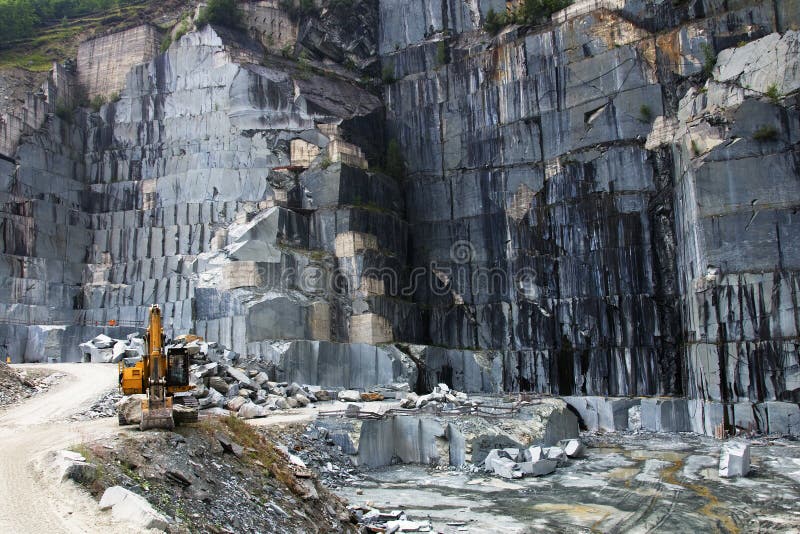Unearthing the Rich History and Sustainable Practices of Granite Quarrying
As we stand on the precipice of uncovering the elaborate tapestry of granite quarrying, a trip through time discloses not just the physical act of drawing out rock however also the cultural and historical value woven into the really fabric of this method. From the old origins that laid the structure for contemporary quarrying strategies to the sustainable methods that are forming the future of this sector, each chisel mark on granite surface areas informs a story waiting to be discovered (granite quarries in south africa). The heritage of granite quarrying extends much beyond plain removal; it is a testimony to human ingenuity, strength, and the enduring appeal of this marvelous rock
Ancient Origins of Granite Quarrying
Going back to ancient people, the technique of quarrying granite has been an important component of human history and architectural innovation. The earliest proof of granite quarrying dates back to ancient Egypt, where enormous pyramids and detailed sculptures were crafted from this durable rock. The Egyptians made use of primitive devices to extract granite blocks from quarries, showcasing the relevance of this product in their monumental buildings.
Progressing in background, the Greeks additionally made significant contributions to the quarrying of granite. The Greeks utilized granite in different building marvels, such as temples and sculptures, demonstrating their skill in shaping and carving this hardy rock. The Romans additionally improved the strategies of quarrying granite, utilizing innovative devices like chisels and hammers to extract and form granite for their legendary structures.
With the centuries, the method of quarrying granite has actually progressed, with modern-day innovations improving efficiency while preserving the timeless appeal of this all-natural rock - granite quarries in south africa. From ancient people to modern contractors, the legacy of granite quarrying proceeds to form our world
Development of Quarrying Methods
The advancement of quarrying methods has actually been marked by a continual development towards higher efficiency and precision in removing granite. Early quarrying methods included hand-operated labor with fundamental tools such as blades, hammers, and wedges to remove granite blocks from the earth.
In even more recent times, the arrival of machinery changed the quarrying industry, making it possible for much faster removal prices and enhanced efficiency. Technologies such as ruby wire saws, high-pressure water jets, and pneumatic drills have ended up being basic in contemporary quarries, allowing for accurate cutting and lowered waste. Furthermore, innovations in computer-controlled equipment and 3D modeling have enhanced quarrying procedures, leading to very little ecological impact and improved sustainability methods. As the demand for granite continues to increase, the development of quarrying methods stays essential to meeting market requires efficiently and sustainably.
Social Value of Granite
Granite holds an extensive social relevance across different civilizations due to its enduring existence in architectural masterpieces and revered monuments. From the stunning pyramids of Egypt to the complex carvings of the Angkor Wat temple in Cambodia, granite has actually been a product of selection for revealing splendour and longevity in social heritage. In old Rome, granite columns decorated holy places and public buildings, symbolizing toughness and permanence. The cultural importance of granite extends past its physical features; it symbolizes resilience, security, and eternity, making it a sign of withstanding legacies and practices.

Sustainable Practices in Quarrying
Among the abundant history of granite quarrying and its social significance lies an expanding emphasis on lasting methods within the industry. As environmental recognition and concerns about review source deficiency have actually heightened around the world, the quarrying sector has progressively accepted lasting approaches to reduce its effect on the environment and surrounding areas.

Furthermore, reclamation and rehabilitation of quarry sites post-extraction are essential to sustainable methods. By bring back quarried areas to a natural or helpful state, such as developing wild animals environments or entertainment areas, quarriers can balance out the environmental impact of their procedures and add favorably to the regional environment.
Tradition of Granite Quarrying
With a historic backdrop steeped in craftsmanship and industrial progression, what sustaining influence has granite quarrying left on the landscape of contemporary society? The tradition of granite quarrying transcends mere removal techniques; it has shaped architectural marvels, urban click to investigate landscapes, and social heritage worldwide. The sturdy nature of granite has actually made it a favored option for monuments, structures, and framework, standing as a testament to the skill and artistry of quarry employees across generations.
Furthermore, the economic impact of granite quarrying can not be ignored. The market continues to supply employment possibility and drive neighborhood economic situations in regions where granite extraction prevails. It has also spurred technological developments in quarrying techniques and devices, causing much more effective and lasting practices.
In regards to sustainability, the tradition of granite quarrying consists of efforts to alleviate ecological impacts with reclamation jobs and liable resource administration. By stabilizing financial interests with environmental stewardship, the sector makes every effort to make sure that future generations can proceed to take advantage of this enduring natural deposit.
Final Thought
